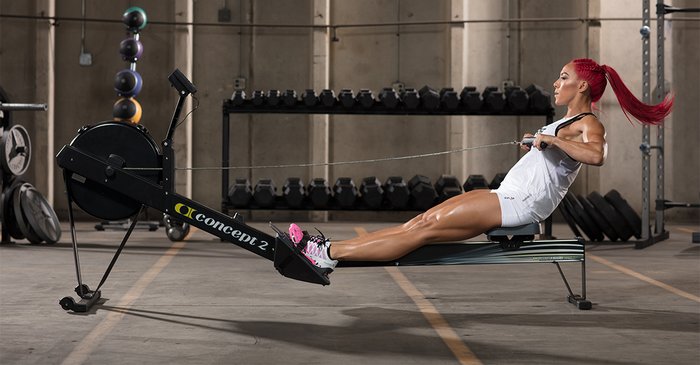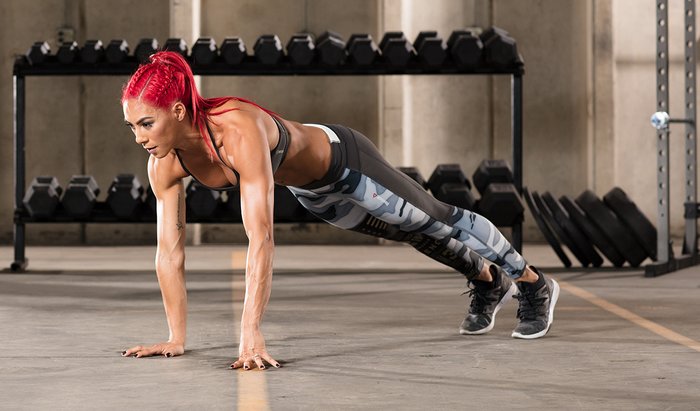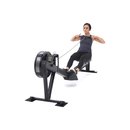When it comes to your body, your development should be striking and memorable from every angle, which is why RSP Nutrition-sponsored athlete Hannah Eden believes developing a strong, sexy back is a must.
It's not just about looks, either; a strong back is functional. While many believe you need to focus more on the core to help alleviate nagging back issues, a strong back, glutes, and hamstrings (aka the posterior chain) can help correct bad posture and alleviate the weaknesses causing you pain.
Why Back Is on the Back Burner
If a strong back is aesthetically appealing and practical, why do so many people slack when it comes to working on it?
Eden, the owner of PumpFit Club in Fort Lauderdale, Florida, ventures a guess.
"You don't get instant gratification when training your back," she admits. "It's not looking back at you in the mirror, and honestly, it's tougher to stimulate than your arms, shoulders, chest, or abs."
The fix is rather easy, though. According to Eden, you just need to commit to doing the work. If working back is not your favorite, it's important to make your workouts fun as well as challenging.
"There's nothing worse than a plodding, boring back workout that you dread," says Eden. "Challenge yourself so you'll come back wanting more."
Oars in the Water
Eden designed a CrossFit-style back attack that offers variety and plenty of action. What's more, the entire workout should take only 25 minutes to complete.
Begin on a rowing machine, where you'll do a 1,000-meter row. Your effort should be steady—not too fast but not too slow. Your even pace should be just enough to get you sweating and engage the main muscles of the back: the lats, trapezius, rhomboids, and erector spinae. This long row prepares your muscles for the exercises to come. Maintain a pace that doesn't exhaust you.

Rowing Machine
Next, you'll do a four-exercise circuit for a total of 8 minutes, performing 20 reps of each exercise and continuing to cycle through the circuit until time's up.
"Keep an eye on the wall clock or set your timer on your smartphone," Eden says. "This helps you focus fully on the exercises and stop thinking about how much longer you have left. Rest as little as possible between exercises. This is basically an AMRAP, with you trying to get as many rounds as you can in sets of 20."
The first exercise in the circuit is the American kettlebell swing.
"These differ from the Russian swing in that you are bringing the weight all the way up until your arms are pointing straight toward the ceiling and the bell is overhead, instead of stopping when it's around chin level," Eden explains. "Place your feet slightly wider than shoulder-width apart, keep your knees slightly soft and your chin angled down toward your chest, and flex your lower back and core to protect your spine."
Assume the correct stance, soften your knees and hinge back your hips. Grasping the kettlebell, extend or "thrust" your hips in an aggressive, explosive motion to full extension. Squeeze your glutes and quads to avoid overextending by leaning back. Engage your lats at the top of the motion, and suck your bellybutton to your spine to stabilize the kettlebell above your head. It's very important to slow the momentum of the kettlebell at the top so it doesn't go past vertical. Your biceps should be covering your ears at full extension.

Because of the extended range of motion at your shoulders, err on the lighter side when it comes to weight selection. During each rep, think about the muscles of your upper and mid back transitioning from an extended position to a contracted one as you lift the weight from between your knees and drive it forward and overhead in one fluid motion.
The Power House
Immediately follow with alternating bent-over rows. Grab a pair of dumbbells you can lift with control.
"Don't be ballistic," instructs Eden. "Control the positive and negative. Count up and down for 2-3 seconds if you need to."
For the bent-over row, hinge your hips back, holding your torso at about a 30-degree angle to the floor. Keep your spine straight and neutral as you row one dumbbell up, then lower and lift the other, alternating for a total of 20 reps.
Third in this series of exercises is the burpee, a standard conditioning move requiring back strength and explosive power.
"Here, you want to move quickly, blasting out your reps without allowing your form to falter," Eden explains.
Stand upright with your feet shoulder-width apart.Begin by squatting down as you put your hands out in front of you. Kick your legs out behind you as your hands hit the floor. This position resembles the "down" portion of a push-up. Quickly press yourself back up with your arms while pulling your feet in underneath you again. Land with your feet flat on the floor to protect your knees.
Extend at your hips and knees to straighten up, using the momentum of your hands driving overhead to leap off the ground at the top. As soon as you land back on the floor, descend into the next rep.

Not the Same Old Back Routine
You'll end the circuit with a movement often thought of as more of a shoulder than a back exercise: the Arnold press.
"The delts and back tend to work synergistically together, so I like to include Arnold presses as part of a back routine," Eden explains. "Yes, you'll work the three heads of your deltoid, but you'll also engage your traps and upper back secondarily."
Sit on a low-back bench and hold a dumbbell in each hand in front of your shoulders, palms facing behind you. With your eyes focused forward and shoulder blades retracted (as if you're trying to pinch a penny between them), press the dumbbells overhead in an arc, twisting your wrists on the ascent so your palms transition from facing behind you to facing forward at the top.
As you reverse the motion, twist your wrists back to the original starting position when at shoulder level. Keep your rib cage tucked in and suck your navel to your spine.
Finish Strong With Pull-ups and Core
After completing the full 8-minute AMRAP cycle of these four exercises, rest for a minute to catch your breath. Then, it's on to a superset combo: the plank hold with a weighted vest and a tempo wide-grip pull-up, again with the vest if you can handle it.

Plank Hold
You'll do these for 6 minutes, EMOM-style (every minute on the minute).
"In the first, third, and fifth minutes, do the plank hold, and in the second, fourth, and sixth minutes, do pull-ups," Eden explains. "For the pull-ups, focus on a tempo of three-seconds up and three-seconds down, trying to continue for the full minute. If you fail before the minute is up, it's OK. Just work toward being able to tempo rep for 60 seconds at a time as you get stronger and improve your endurance over the next few months."
When those 6 minutes are up, you'll do another 1,000-meter row as a cooldown.
"Your back should feel fried by this point, which is exactly what you want," Eden says. "You can do this workout every 4-7 days, depending on how much of a priority your back is at the moment. You can also pair it with a cardio session, as long as you do the cardio afterward."

BodyFit
$6.99/month- 2,500+ expert-created single workouts
- 3,500+ how-to exercise videos
- Detailed workout instruction
- Step-by-step workout tips
- Training at gym or at home
- Access to Workout Plans
- Access to Bodyfit App
- Store Discounts
Already have a Bodybuilding.com account with BodyFit? Sign In

What comes with BodyFit?

- Instructional Videos
Don't risk doing a workout improperly! Avoid injury and keep your form in check with in-depth instructional videos.

- How-to Images
View our enormous library of workout photos and see exactly how each exercise should be done before you give it a shot.

- Step-by-Step Instructions
Quickly read through our step-by-step directions to ensure you're doing each workout correctly the first time, every time.




